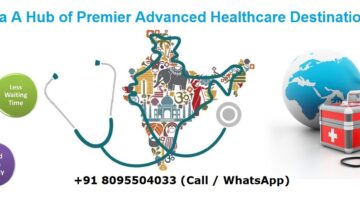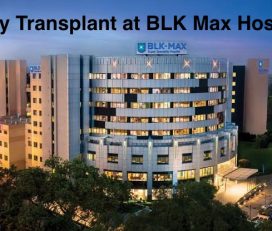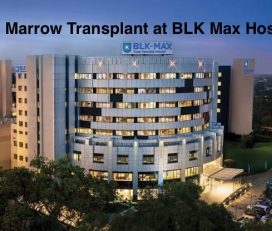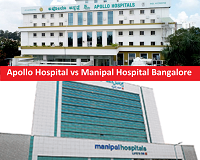
Brains Neuro Spine Hospital
Overview
Distinguished teams of super-specialists and fully trained support staff at BRAINS use state-of-the art technologies and procedures in the diagnosis, treatment and management of neurological disorders. The equipment and procedures available at this centre of advanced neuro-care are the best and the latest in the business of brain and spine repair. Here are some of them…
CT scan
For a CT scan, you’ll would have to lie on a narrow table that slides into a small chamber. X-rays pass through your brain from various angles, and a computer uses this information to create cross-sectional images (slices) of your brain. It’s currently used chiefly to rule out tumours, strokes and head injuries.
MRI
Uses radio waves and a strong magnetic field to produce detailed images of your brain. You lie on a narrow table that slides into a tube-shaped MRI machine, which makes loud banging noises while it produces images. MRIs are currently used primarily to rule out other conditions that may account for cognitive symptoms.
Neurosonology
This is a point-of-care ultrasonography procedure that enables neurologists to obtain real time images at bed side and correlate them with a patient’s signs and symptoms. It is also referred to as ultrasound stethoscope. Neurosonology includes carotid vertebral Doppler, transcranial Doppler and peripheral nerve and muscle sonography.
Awake brain surgery
Also called awake craniotomy, this involves sedation and localized anaesthesia to block out any pain. During the procedure the doctor will place your head in a fixed position to keep it still and ensure accuracy. He will then remove part of your skull to reach your brain. The patient would be awake during most of the surgery, but sedated and asleep while parts of his skull are being removed in the beginning of the surgery and put back at the end of the surgery.
Operative microscopes
An operating microscope is an optical microscope specifically designed to be used in a surgical setting, typically to perform microsurgery. Design features of an operating microscope are: magnification typically in the range from 4x-40x, components that are easy to sterilize or disinfect in order to ensure cross-infection control. Equipped with a binocular head with adjustable eye pieces and foot controls to allow freedom of arm movement, it illuminates and magnifies the deeper parts of the operating field.
Neuro navigator
A computer-assisted technology used by neurosurgeons to “navigate” within the confines of the skull or vertebral column during surgery. Recognised as the next big revolutionary step in stereotactic surgery, neuronavigation provides intraoperative orientation to the surgeon helps in planning a precise surgical approach to the targeted lesions and defines the surrounding neurovascular structures. In combination with functional data from functional MRI and magnetoencephalography (MEG), neuronavigation helps to avoid the eloquent areas of the brain during surgery.
Intra operative electrophysiological monitoring
Intraoperative neurophysiologic monitoring (IONM) or intraoperative neuromonitoring is the use of electrophysiological methods such as electroencephalography (EEG), electromyography (EMG), and evokes potentials to monitor the functional integrity of certain neural structures like nerves, the spinal cord and parts of the brain during surgery. The purpose of IONM is to reduce the risk of nervous system damage, and/or to provide functional guidance to the surgeon and anaesthesiologist. When the affected nerve is exposed during surgery, very sensitive electrical testing can be performed, which helps guide the surgeon. This testing is not possible through the skin before the surgery.
Oximetry
This test monitors and records your blood oxygen level while you’re asleep and can be used as a screening test for obstructive sleep apnea. If you have obstructive sleep apnea, the results of this test will often show drops in your blood oxygen level during apneas and subsequently rises with awakenings. If the study reveals temporary drops in oxygen compatible with obstructive sleep apnea, a polysomnogram may follow to formally diagnose obstructive sleep apnea and determine appropriate therapy.
Departments
Alzheimer’s disease
Progressive Memory loss / Cognitive impairment, Behavioral changes, Language impairment, Visuospatial impairment, Impairment of executive function, Attention deficits
Amyotrophic Lateral Sclerosis
Difficulty lifting the front part of your foot and toes (footdrop), Weakness in your leg, Feet or ankles Hand weakness or clumsiness, Slurring of speech or trouble swallowing, Muscle cramps and twitching in your arms, Shoulders and tongue
Bell’s palsy
Twitching, Rapid onset of mild weakness on either side of the face, Drooping eyelid or corner of the mouth, Drooling, Dry eye or mouth, Impairment of taste, Excessive tearing in the eye, Pain around the jaw or in or behind your ear on the affected side
Brain Tumours
Seizures, Vomiting, Progressive headache, Visual disturbance-blurring, Visual disturbance-field cut, Visual disturbance-double vision, Hearing impairment, Limb weakness, Memory impairment, Behavioral disturbance, Loss of smell sensation
Cavernous Malformations
Headaches, Seizures, Changes in hearing or vision, Weakness, Paralysis, Difficulty thinking clearly or with remembering things
Central sleep apnea
Excessive daytime sleepiness, Loud snoring, observed episodes of breathing cessation during sleep, Abrupt awakenings accompanied by shortness of breath, Dry mouth or sore throat, Excessive daytime sleepiness, Loud snoring, Awakening with chest pain
Cerebellar astrocytoma
Headache, vomiting, irritability, failure to thrive, difficulty in performing acts requiring coordination
Cerebral aneurysm
Sudden onset of severe headache,Seizures,Pain in the nape of the neck,Stiffness of neck,Loss of consciousness,Limb weakness,Blurring of vision,Double vision
Cerebral palsy
Excessively stiff or floppy muscle tone, stiff muscles and exaggerated reflexes, stiff muscles with normal reflexes (rigidity), lack of muscle coordination (ataxia), tremors or involuntary movements, slow or writhing movements (athetosis), delays in reaching motor skills milestones, favoring one side of the body, difficulty walking, walking on toes, crouched or scissors-like gait with knees crossing, excessive drooling or problems with swallowing, difficulty with sucking or eating
Craniosynostosis
A misshapen skull, an abnormal feeling or disappearing “soft spot” on your baby’s skull, slow or no growth of the head, development of a raised or hard ridge along affected sutures, increased pressure within the skull
Diabetic neuropathy
Unusual sensations (paresthesias), Numbness and pain in hands and feet, Weakness of the muscles in the feet and hands, Numbness and pain in the chest wall, Sensory or motor deficits in the face, Persistent nausea, Vomiting, Diarrhea, Constipation
Encephalitis
Headache, Fever, Aches in muscles or joints, Fatigue or weakness, Altered consciousness, Confusion or agitation, Personality changes, Seizures, Loss of sensation or paralysis in certain areas of the body, Muscle weakness, Hallucinations and double vision
Epilepsy
Tonic clonic or jerky movements of limbs, Altered consciousness, Loss of consciousness, Facial jerky movements, Uprolling of eyes, Froth in the mouth, Tongue bite, Urinary incontinence
Giant cell arteritis
Headache, Fever, Tenderness of scalp, Pain in the jaw and tongue while chewing, Blurred vision, Visual loss, Myalgias / body aches
Glioblastoma
Headaches, Nausea, Vomiting, Slow and steady impairment of motor abilities and seizures, Weakness on one side of the body, Cognitive impairment, Confusion, Personality changes, Difficulty in speech, Loss of vision
Glioma
Seizures, Endocrine Problems (diabetes and/or hormone regulation), Visual changes or double vision, Headaches, Paralysis of nerves/muscles of the face or half of the body, Respiratory changes, Clumsy, Uncoordinated walk, Hearing loss, Personality changes
Glossopharyngeal Neuralgia
Severe pain in back of the nose and throat (nasopharynx), Pain in the back of the tongue/ear/throat/tonsil area/voice box (larynx), Pain usually on one side, Pain triggered by chewing/coughing/laughing/speaking/swallowing
Hemifacial Spasm
Twitching of the muscles on one side of the face,Involuntary blinking of the eyes,Involuntary smacking/twitching of the lips, Hemi facial pain-sharp and shooting type for brief periods
Herniated disk
Back pain/neck pain, Pain radiating to the hand from the neck,Shooting pain along the back of the leg, Burning sensation along the back of the leg, Numbness of feet, Muscle weakness, Bladder or bowel disturbance
Huntington’s disease
Involuntary dancing movements of limbs, Involuntary of facial muscles, Slowness of movements, Stiffness of muscles, Imbalance, Difficulty in talking and swallowing, Forgetfulness, Behavioral disturbances, Depression, Sleep disturbances, Personality change
Hydrocephalus
An unusually large head, A rapid increase in the size of the head, A bulging or tense soft spot (fontanel) on the top of the head, Vomiting Sleepiness, Irritability, Poor feeding, Seizures, Eyes fixed downward (sunsetting of the eyes), Deficits in muscle
Idiopathic Hypersomnia
Recurring episodes of excessive day time sleepiness, Sleep paralysis of limbs, Hallucinations, Dizziness, Fainting, Headache
Inherited metabolic disorders
Apnea, Lethargy, Poor feeding, Tachypnea and Vomiting, Developmental delays, Birth defects, Abnormally small head, Seizures, Abnormal movements, Growth problems
Kennedy’s Disease
Weakness of tongue and mouth muscles, Fasciculations and gradually increasing weakness of limb muscles with muscle wasting, Pre-mature muscle fatigue that begins in adolescence, Loss of sensation and numbness usually not noticeable, Hand tremor with volit
Leukodystrophy
Altered movements, Awkward gait, Loss of speech, Lack of appetite, Impaired vision, Altered hearing, Slowdown in mental and physical development
Lymphoma
Swollen lymph nodes in the neck, Armpits or groin, Abdominal pain or swelling, Chest pain, Coughing, Laboured breathing, Fatigue, Fever, Night sweats, Weight loss
Medulloblastoma
Nausea, Vomiting, Sleepiness, Blurred vision, Loss of coordination, Slurred speech, Poor balance, Dizziness, Confusion
Meningitis
Fever, Headache, Nausea and vomiting Stiff neck, Photophobia (low tolerance to bright light), Confusion, Joint aches or pains, Drowsiness, Seizures, Fever, High-pitched cry, Pale and blotchy skin color, Not wanting to eat, Vomiting
Motor Neuron Disease
Difficulty lifting the front part of your foot and toes (footdrop), Weakness in your leg, feet or ankles Hand weakness or clumsiness, Slurring of speech or trouble swallowing, Muscle cramps and twitching in your arms, shoulders and tongue
Multiple Sclerosis
Bladder problems (frequent urination, urgency), Depression, Dizziness or vertigo, Impaired coordination (ataxia), Sensory symptoms (numbness, pain), Spasticity (muscle stiffness or spasms), Tremors, Trouble with short-term memory and concentration
Myasthenia gravis
Weakness of the eye muscles, Difficulty in swallowing, Slurred speech, Double vision, Altered speaking, Limited facial expressions, Problems chewing
Neurofibromatosis
Flat and light brown spots on the skin, Freckling in the armpits or groin area, Soft bumps on or under the skin, Bumps on the iris of the eye, Bone deformities, Learning disabilities, Impaired thinking skills (cognition) are common in children with NF1
Neuromyelitis optica (NMO)
Blindness in one or both eyes, Weakness or paralysis in the legs or arms, Painful spasms, Loss of sensation, Bladder or bowel dysfunction from spinal cord damage
Obstructive sleep apnea
Excessive daytime sleepiness, Loud snoring, Observed episodes of breathing cessation during sleep, Abrupt awakenings accompanied by shortness of breath, Awakening with a dry mouth or sore throat Awakening with chest pain, Morning headache
Oligodendroglioma
Headaches, Seizures, Personality changes, Weakness in the arms or legs, Numbness, Nausea and vomiting, Vision loss
Optic neuritis
Blurring of vision, Loss of vision, Loss of colour vision, Pain in the orbit
Optical Neuritis
Pain, Vision loss, Loss of color vision, Flashing lights
Parkinson’s disease
Tremor, slowed movement, rigid muscles, impaired posture and balance, loss of automatic movements, speech changes, writing changes
Polymyositis
Tiredness or fatigability, Difficulty in climbing stairs, Difficulty in getting up from squatting position, Difficulty in lifting arms, Difficulty in swallowing
Primary lateral sclerosis (PLS)
Stiffness and weakness and spasticity in legs, Tripping, Difficulty with balance and clumsiness, Weakness and stiffness progressing to your trunk and arms/hands/tongue, Hoarseness, Reduced rate of speaking, Slurred speech and drooling as the facial muscle
Primary progressive aphasia
Deterioration of language function in the form of difficulty in naming, Decreased fluency, Hesitancy in producing speech, Difficulty in understanding words
Sciatica
Back pain,Shooting pain along the back of the leg,Burning sensation along the back of the leg, Weakness of the toes, Inability to hold on to footwear, Numbness of the toes and foot, Difficulty to pass urine,Inability to appreciate bladder filling sensation
Spinal Stenosis
Back pain, Severe back pain on walking short distances that improves with rest, Weakness of feet on walking short distances that improves with rest, Burning sensation and pain in back and leg on prolonged standing or walking
Stroke
Weakness of one side of the body, Difficulty in talking, Difficulty in swallowing, Visual disturbances, Imbalance, Double vision, Deviation of angle of mouth, Giddiness, Altered sensorium, Drowsiness, Unconsciousness
You can Book Appointment online or Call / WhatsApp here
3rd floor, 8 Ideal Homes HBCS Layout, Javarandoddi, RR Nagar, Bangalore – 98
All Neuro related surgeries are performed in Brains Hospital
Yes. But coverage depends on Insurance product you have taken










